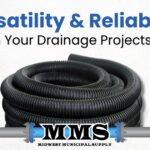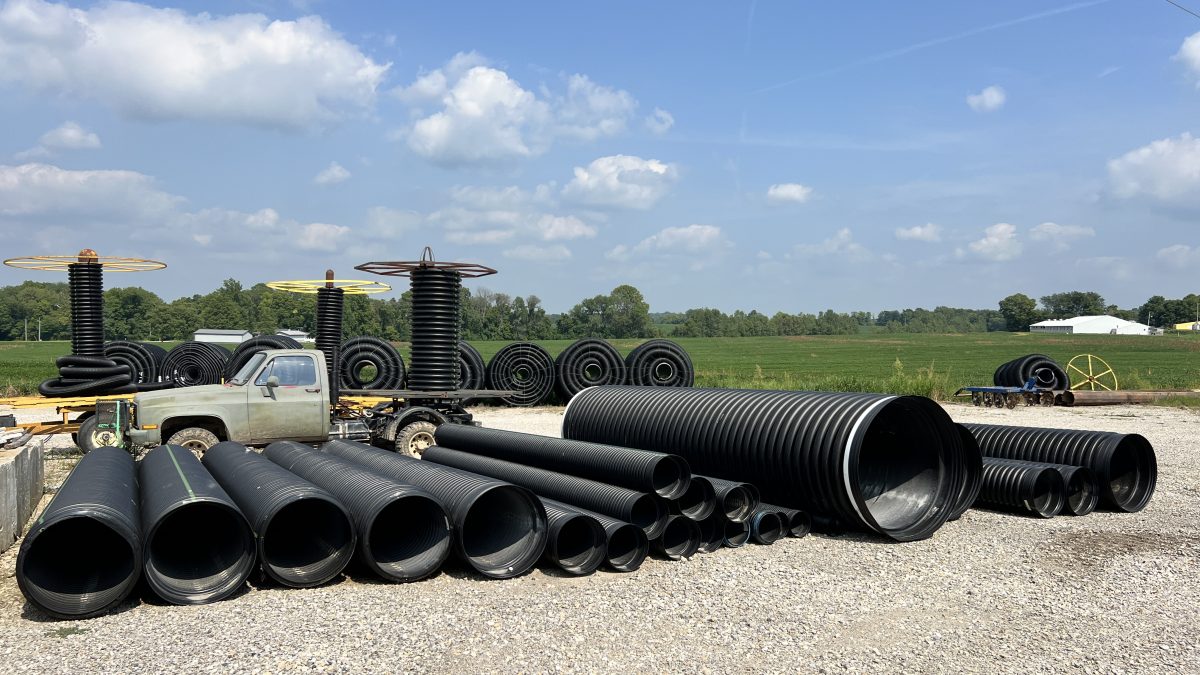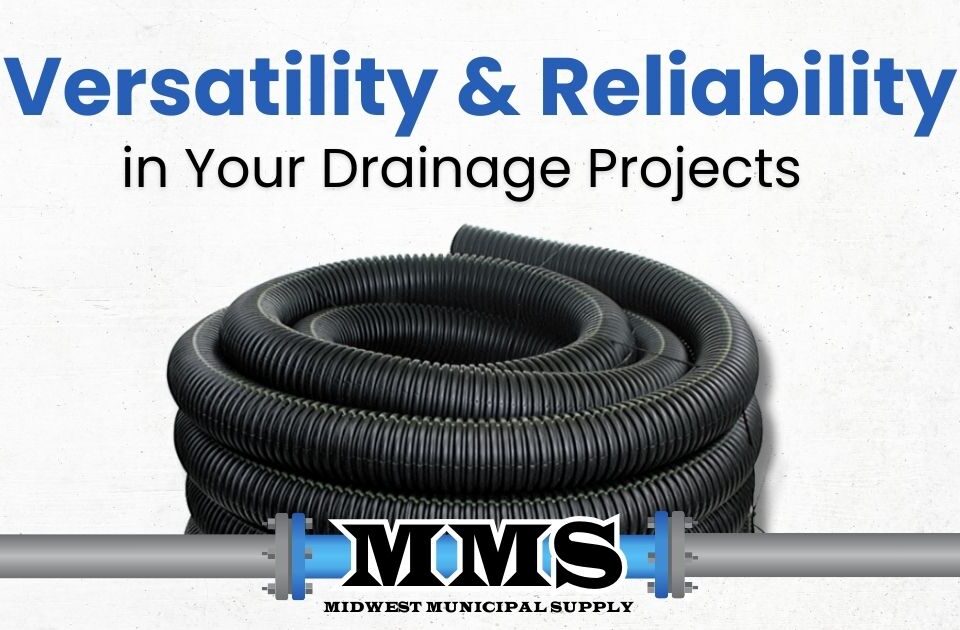
Versatility and Reliability in Your Drainage Projects
March 28, 2025Culvert pipes play a crucial role in managing water flow and preventing erosion in various settings, from rural roads to urban developments. In this comprehensive guide, we’ll explore everything you need to know about culvert pipes, including their types, installation processes, and maintenance requirements.
What Are Culvert Pipes?
Culvert pipes are structures designed to channel water flow beneath roads, railways, or embankments. They’re essential for proper drainage and help prevent flooding and erosion. Culvert pipes come in various materials and sizes, each suited for different applications and environments.
Types of Culvert Pipes
- Corrugated Metal Pipes (CMP): Durable and cost-effective, CMPs are commonly used in rural and agricultural settings.
- Reinforced Concrete Pipes (RCP): Known for their strength and longevity, RCPs are ideal for heavy traffic areas and larger drainage projects.
- High-Density Polyethylene (HDPE) Pipes: Lightweight and corrosion-resistant, HDPE pipes are gaining popularity due to their ease of installation and long lifespan.
- Plastic Pipes: Including PVC and ADS N-12 dual wall pipes, plastic culverts offer excellent durability and are resistant to chemical corrosion.
Choosing the Right Culvert Pipe
Selecting the appropriate culvert pipe depends on several factors:
- Water flow rate and volume
- Soil conditions
- Traffic load
- Environmental considerations
- Budget constraints
For expert guidance on choosing the right culvert pipe for your project, consider consulting with professionals like Midwest Municipal Supply, who offer a wide range of drainage solutions.
Culvert Pipe Installation
Proper installation is crucial for the longevity and effectiveness of culvert pipes. Here’s a general overview of the installation process:
- Site Preparation: Clear the area and establish proper grading.
- Excavation: Dig a trench to the required depth and width.
- Bedding: Lay a proper foundation of gravel or sand.
- Pipe Placement: Position the culvert pipe with the correct slope for optimal water flow.
- Backfilling: Carefully fill around the pipe, compacting in layers.
- Surface Restoration: Restore the road or ground surface above the culvert.
For a detailed guide on culvert pipe installation, particularly focusing on ADS N-12 dual wall pipes, check out this comprehensive installation guide from Midwest Municipal Supply.
Spotlight on ADS N-12 Dual Wall Pipe
Advanced Drainage Systems (ADS) N-12 dual wall pipe has become increasingly popular for culvert applications. This innovative product combines the strength of corrugated exterior walls with the smooth interior of solid wall pipes, offering several advantages:
- Enhanced hydraulic efficiency
- Improved structural integrity
- Ease of installation
- Long-term durability
For more information on ADS N-12 dual wall pipes and other drainage solutions, visit the ADS official website.
Maintenance and Inspection of Culvert Pipes
Regular maintenance is essential to ensure the longevity and effectiveness of culvert pipes. Here are some key maintenance practices:
- Regular Inspections: Check for signs of damage, blockages, or erosion around the culvert.
- Debris Removal: Clear any accumulated debris that might obstruct water flow.
- Erosion Control: Monitor and address any erosion issues around the culvert inlet and outlet.
- Structural Repairs: Address any cracks, joint separations, or other structural issues promptly.
For professional culvert pipe installation and maintenance services, consider reaching out to experienced contractors like Keith Dike Excavating, who specialize in drainage solutions and earthwork.
Environmental Considerations
When installing or maintaining culvert pipes, it’s crucial to consider the environmental impact:
- Aquatic Habitat: Ensure the culvert design allows for fish passage where necessary.
- Water Quality: Implement erosion control measures to prevent sediment from entering waterways.
- Wetland Protection: Adhere to regulations regarding wetland areas and obtain necessary permits.
Innovations in Culvert Pipe Technology
The field of culvert pipe design and manufacturing continues to evolve. Some recent innovations include:
- Trenchless Installation Methods: Minimizing surface disruption during installation.
- Smart Culverts: Incorporating sensors for real-time monitoring of water flow and structural integrity.
- Eco-friendly Materials: Developing culvert pipes made from recycled or sustainable materials.
Conclusion
Culvert pipes are essential components of effective drainage systems, playing a vital role in infrastructure development and environmental management. By understanding the types of culvert pipes available, following proper installation procedures, and maintaining them regularly, we can ensure these crucial structures continue to protect our roads, properties, and natural environments from water damage and erosion.
Whether you’re a contractor, property owner, or municipal official, staying informed about culvert pipe technologies and best practices is crucial. For more information and expert advice, consider reaching out to industry leaders like Midwest Municipal Supply, Keith Dike Excavating, or Advanced Drainage Systems.
By prioritizing proper culvert pipe selection, installation, and maintenance, we can build more resilient infrastructure and better manage our water resources for years to come.

